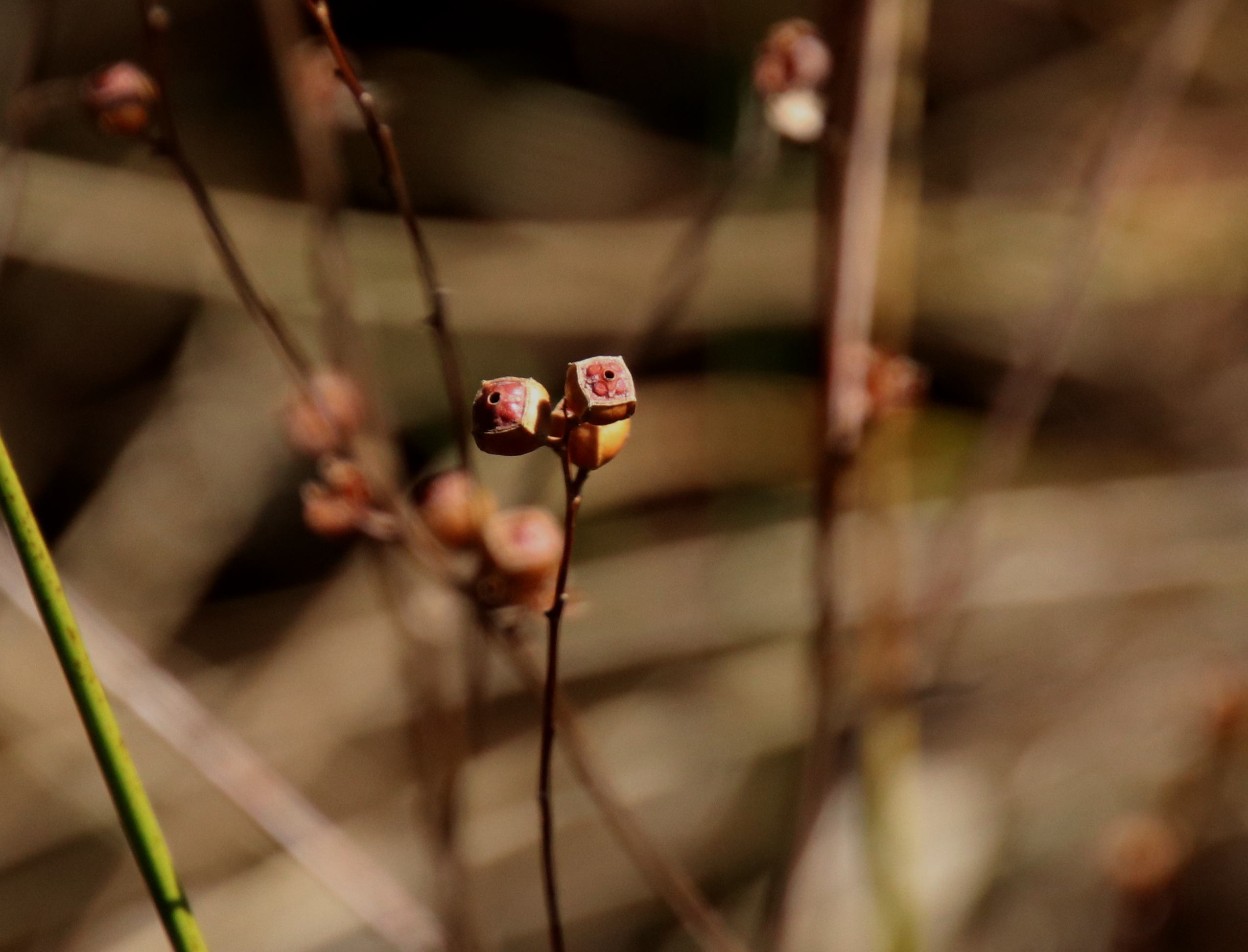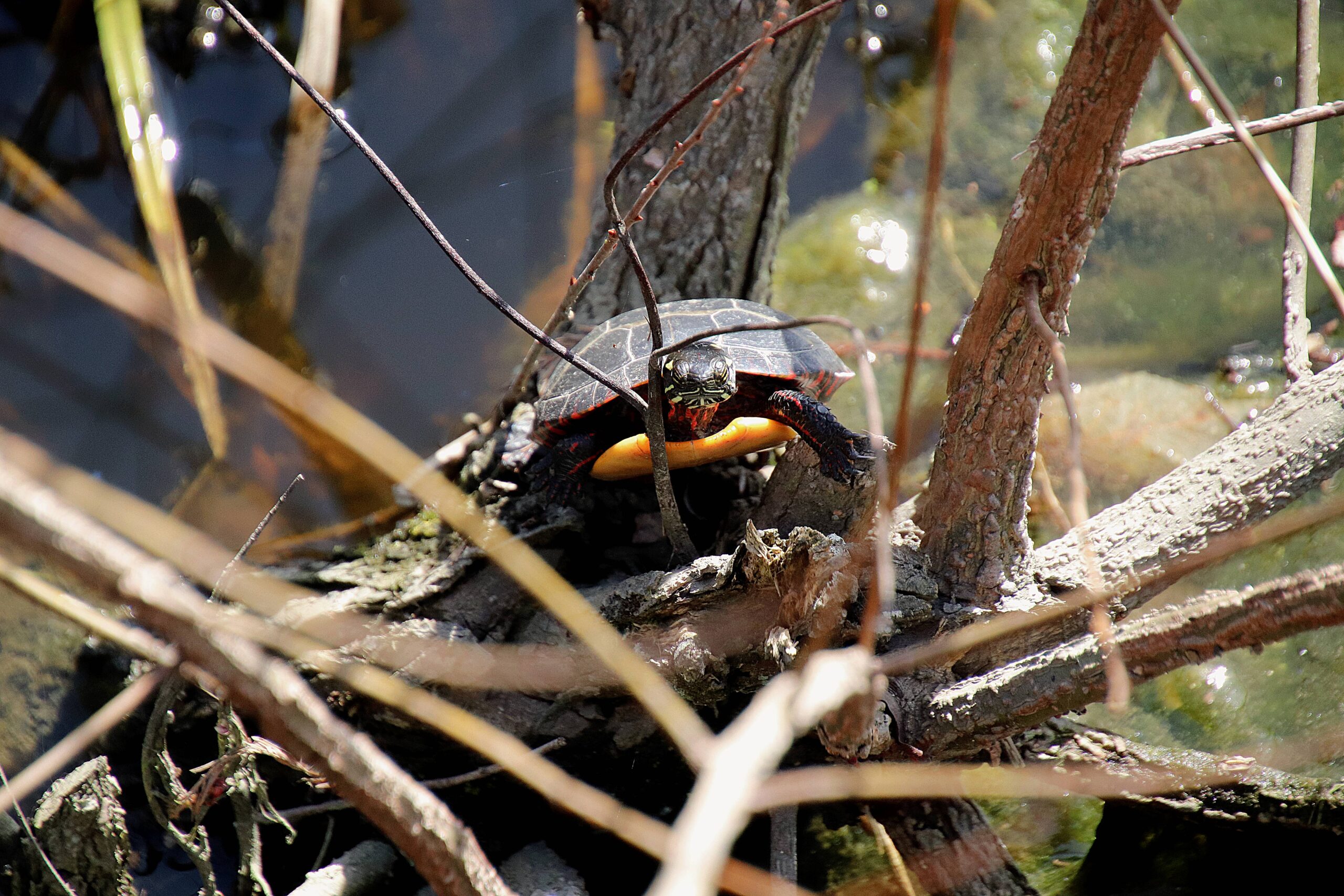

The fossil record shows that the eastern painted turtle existed 15 million years ago! It is the most wide spread turtle in North America.
The eastern painted turtle has a smooth and flattened carapace, colored olive to black, with a border of red crescents or bars. They have bright yellow spots on either side of their head, and yellow stripes through their eyes and along their jawline.
Painted turtles can be found in slow moving, shallow water with vegetation, such as ponds, marshes, lakes, pools, and ditches. They love basking on warm rocks.
At night, painted turtles drop to the bottom of a body of water, or perch on an underwater object to sleep. In winter, they hibernate by burying themselves, either on the bottom of a body of water, or near water in the shore-bank. During hibernation, the turtle does not breathe, although if surroundings allow, they may get some oxygen through their skin.
Being hit by vehicles is a significant source of mortality to this species. Painted turtles crossing roads are often pregnant females searching for nesting sites.
Mystery Monday is sponsored by the Spy Newspapers and Adkins Arboretum



Write a Letter to the Editor on this Article
We encourage readers to offer their point of view on this article by submitting the following form. Editing is sometimes necessary and is done at the discretion of the editorial staff.